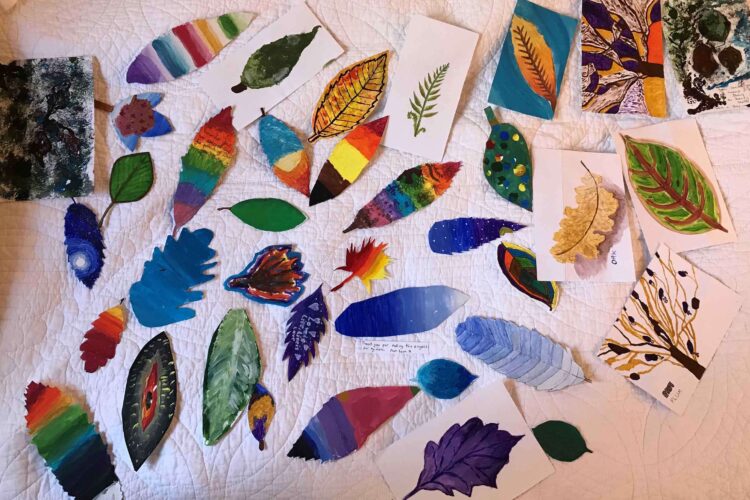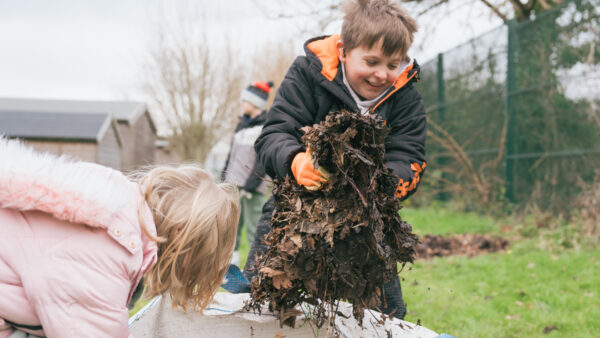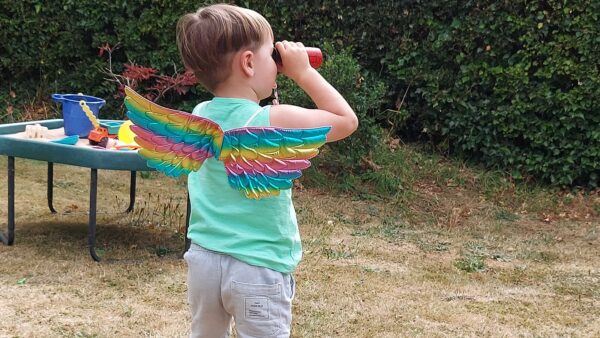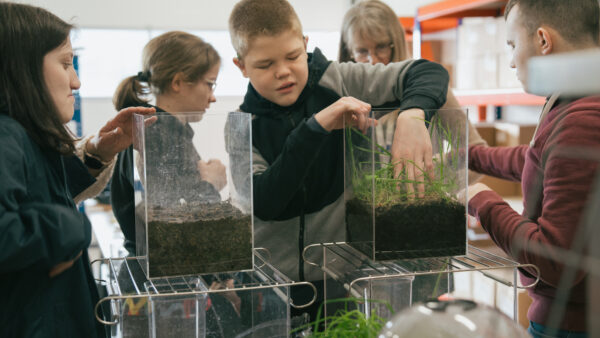A Forest of Hope
Did you know that trees communicate with one another?
Through a network of fungi in the soil, they communicate their needs and send each other nutrients along their root systems. They send scent messages from their leaves. A bit like when we lean on a friend or family member for support, trees have a support network too.
The more you think about it, the more it becomes clear. Trees are not too dissimilar to us humans. We believe that we can learn a lot from trees, and this only increases our love of them!
The power of realising your own strength in a difficult time
Whilst our dementia friendly activity groups were forced to pause during summer 2020 we wanted to create a project which sparked new connections and empower people to realise their own strength and support systems (a bit like a tree). And so ‘A Forest of Hope’ was born. Working with Naomi Hannam of Creative Roots we created an intergenerational experiment.
We invited Year 6 children at Constantine Primary School and our Falmouth-based dementia-groups to complete three activities.
- The first was to experience a tree visualisation exercise,
- the second was to paint the tree that came to mind, and
- the third was to paint a leaf from the tree.
As well as painting the leaf, we invited people to write a message of hope on the back for someone in the corresponding group.


The Royal Mail acted like the wind and blew the leaves through people’s letterboxes; our Sensory Strollers and Potager Peas received leaves from the children, and in return the children received them from the Strollers and the Peas. It was wonderful to see all the creativity and imagination, as well as the desire to connect with others in their local community who had been through the lockdown.

What came out was truly unexpected and emotionally charged
‘Not all who wander are lost’, ‘Someone will always be there to help you’ and ‘there is nothing lovelier than a smile from a child’
were amongst the beautiful and heart felt messages on the leaves.
In order to give these messages some permanency we collated the leaves and created big posters, which we sent in the post to all the participants. We hope to show these at Potager café, where the Potager Peas usually meet, and Constantine children live close to.

Top Tips for intergenerational work
- Ensure both sides are giving the opportunity to give and receive. Sometimes the focus can be on the younger people giving and the older people receiving. But it’s much more rewarding for both if they get to experience both sides of the exchange.
- Work in small groups rather than using a buddy system. It can be tempting to buddy people up but if one person drops out then it can be devastating for the buddy. Pairing small groups, as opposed to individuals, can be a good way of reducing the likelihood of this happening.
- Don’t overcomplicate the activity or exchange. A framework which invites the participants to express themselves how they wish, but within a clear, straightforward format, works well. If there are too many steps or processes involved, the project can lose it’s focus
Thanks to funding from Comic Relief, we were also able to share these packs with all of our 165 group members across Cornwall and St. Andrews (Scotland). There were leaves being sent across the country to friends and family, which was wonderful to hear about!



